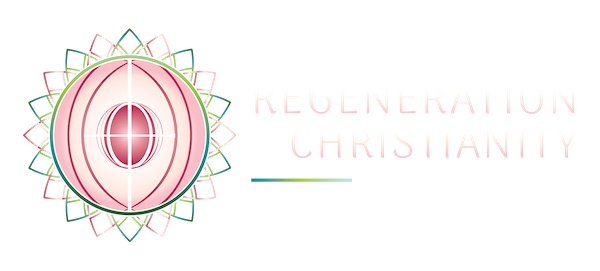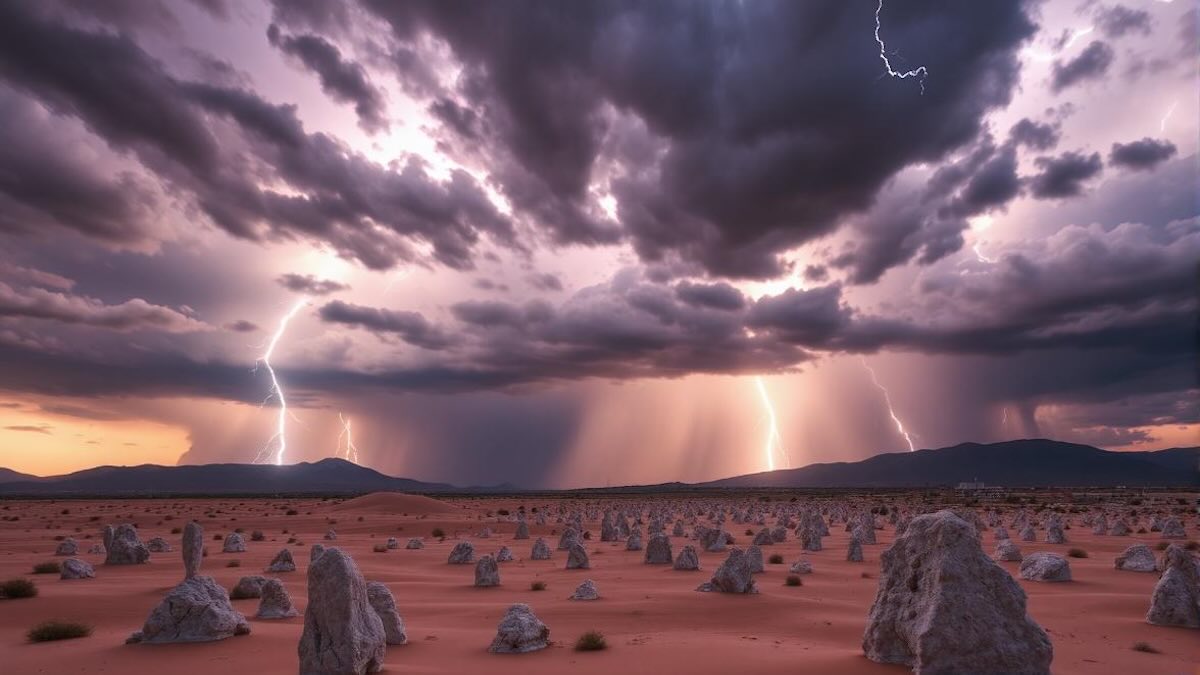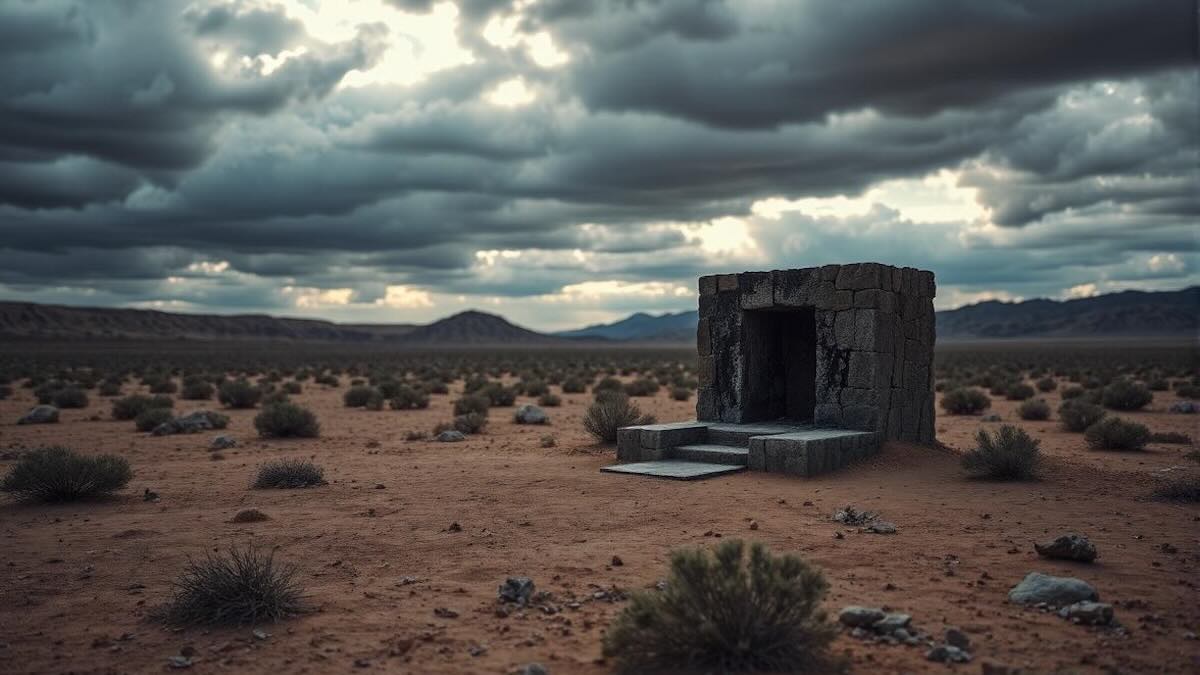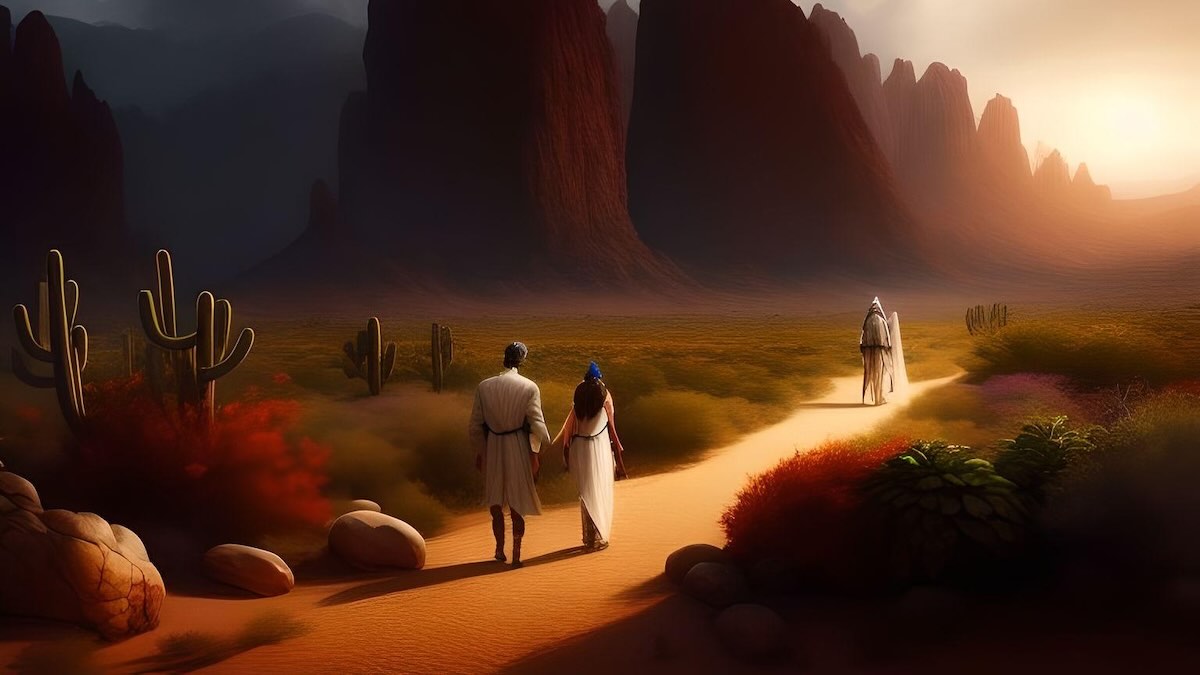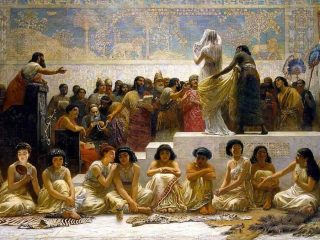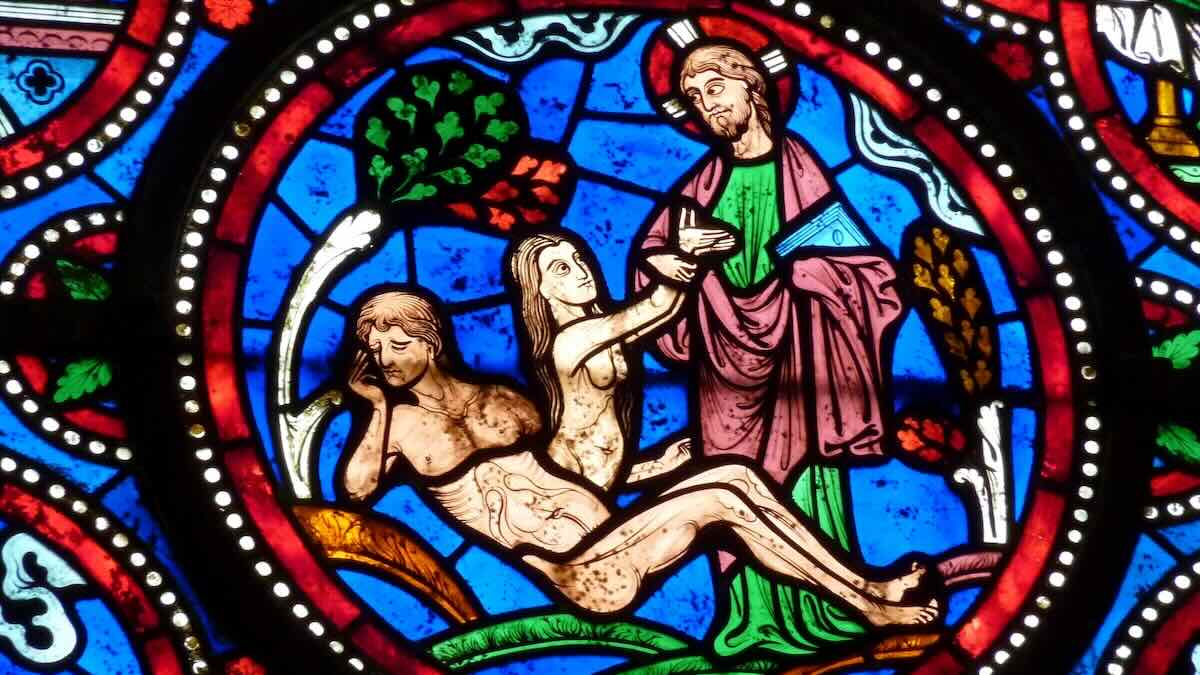Genesis 19, the account of God’s destruction of the cities of Sodom and Gomorrah, and Lot’s escape, is one of the best-known yet also strangest tales in the Bible.
The account actually begins in Genesis 18 when Abraham pedantically argues with God over how many ‘good people’ Sodom must have for it to be saved. God comes across as a petty overseer promoted beyond their own competence, rather than an omniscient deity compassionately yielding absolute power of creation and destruction.
“If I find fifty good people in Sodom, I will save the city to keep them from being killed,” God is manoeuvred into conceding in verse 26. This implies that God can’t arrange for their escape in the same manner as Lot. The whole section has a fabricated quality (as do other parts of the Abrahamic narrative, such as Genesis 17).
This sets up Genesis 19, which contains three sections:
- Verses 1-22, where Abraham’s nephew Lot invites two ‘angels’ into his house and protects them from a sadistic mob;
- Verses 23-29, where Lot escapes with his daughters, but his wife is turned into a pillar of salt for looking back; and
- Verses 30-36, where Lot’s daughters seduce their father to conceive sons.
Genesis 19
In the first section, Lot sees two angels at the city gate and invites them into his home in accordance with the laws of hospitality. It’s unclear how we’re meant to understand this as the Greek word angelos means ‘messenger’ while the later Latin angelus, from which the English ‘angels’ derives, has divine connotations.
Without explanation, “every man in Sodom, young and old,” goes to Lot’s house. “Send them out, so we can have sex with them!” (Genesis 19:5) Lot refuses but offers his two unmarried daughters instead.
It’s hard to believe the entire male population of a city could be held back by a door, or that the laws of hospitality required Lot to abandon his daughters to gang-rape. This deeply unconvincing passage ends with the angels striking the crowd blind with light.
In the morning, Lot gathers his family and flees. “Run for your lives! Don’t even look back,” the angels stress, again without explanation. However, “On the way, Lot’s wife looked back and was turned into a block of salt.” (Genesis 19:26)
Incest
Lot and his daughters reach the safety of the hills and shelter in a cave while Sodom and Gomorrah are destroyed. This leaves Lot’s daughters with the problem of not having any men for them to marry and conceive. They solve this by getting Lot so drunk they can have sex with him without his knowledge—twice—notwithstanding the absence of liquor outlets and the well-known effect of alcohol on male arousal.
In true Biblical fashion both conceive sons from these incestuous encounters—Moab and Ammon, forefathers of the Moabites and Ammonites who become the archenemies of Israel.
Jewish/American Bible scholar Jonathan Kirsch devotes considerable attention to Genesis 19 in The Harlot by the Side of the Road: Forbidden Tales of the Bible. He notes that one interpretation of Lot’s incest is a slur against the Moabites and Ammonites to explain why some of Abraham’s descendants became enemies of God’s people.
Sodom and Gomorrah
The destruction of Sodom and Gomorrah has traditionally been interpreted as a warning against homosexuality. Some theologians place more stress on adultery, pride, and lack of charity as reasons for God’s wrath.
It’s been suggested that Sodom and Gomorrah, two of the five Biblical ‘cities of the plain’, were destroyed by a natural disaster. “One such idea is that the Dead Sea was devastated by an earthquake between 2100 and 1900 BC… however, there are no known contemporary accounts of seismic activity that corroborate this theory.” (Wikipedia)
I suggest the natural disaster that destroyed Sodom and Gomorrah is staring us in the face in the Bible: desertification. Its spectre hangs over the Old Testament like a pall.
Deuteronomy contains strikingly poetic passages about desertification: “The Lord will make the sky overhead seem like a bronze roof that keeps out the rain, and the ground under your feet will become as hard as iron. Your crops will be scorched by the hot east wind or ruined by mildew. He will send dust and sandstorms instead of rain, and you will be wiped out.” (Deuteronomy 28:21-24)
Salt
Equally cheerful, Deuteronomy 29:22-23 reads: “The Lord will strike your country with diseases and disasters. Your descendants and foreigners will see that your land has become a scorching desert of salt and sulphur, where nothing is planted, nothing sprouts, and nothing grows.”
Salt. Where have we seen salt referenced before? Oh, Genesis 19:26.
A 2023 University of Leeds study demonstrated that the well-known Dead Sea salt formations are caused by highly salty surface water (due to excess evaporation) sinking into less salty ground water. What causes excess evaporation? Excess heat.
Isaiah
In Leviticus 26:19, God warns: “I will hold back the rain, so the sky above you will be like iron, and the ground beneath your feet will be like copper.”
The land itself was losing God’s “life-giving breath” (Genesis 6:3).
Imagine living in a world where your fertile land area, your food and water sources, were shrinking—and had been for uncounted generations. That’s the backdrop of the Bible—slow, gradual, continuous, seemingly irreversible desertification.
Isaiah sees the dread hand of desertification in his visions: “Edom’s streams will turn into tar and its soil into sulphur… Edom will be a desert, generation after generation.” (Isaiah 34:9-10) “The Nile River will dry up and become parched land. Its streams will stink, Egypt will have no water.” (Isaiah 19:5) “The city of Babylon… will be like the cities of Sodom and Gomorrah… Only desert creatures, hoot owls and ostriches will live in its ruins.” (Isaiah 13:19-21)
What if Isaiah isn’t merely saying the ruins of Babylon will resemble those of Sodom and Gomorrah… but that they will be destroyed by the same process, the dying of the land.
Emotional cohesion
Behind all human history there is always an invisible yet internally logical emotional history which is the driver for the visible, external history.
Isaiah’s emotive pleas have the ring of emotional truth, unlike the narrative of Genesis 19 which feels like it’s been manufactured for religious/political reasons and lacks any genuine emotional cohesion.
When we read of Dinah’s rape in Genesis 34, and that “Nothing is more disgraceful than rape,” it echoes with the authenticity of the sexual shame and extreme insult sensitivity of the early patriarchies.
In 2 Samuel 16:21, Absalom’s adviser says: “Some of your father’s wives were left here… have sex with them. Then everyone will find out that you have publicly disgraced your father [David].” Again, this chimes with the shame and insult sensitivity of the time.
The behaviour in Genesis 19 lacks this internal cohesion. As a folk memory, it feels very precarious. As emotional history, it falls flat.
The ‘cities of the plain’
The ‘cities of the plain’ moniker is also revealing: the plains were most subject to aridity and desertification, not the hills and mountains. I suspect that Sodom and Gomorrah were destroyed by desertification, not by enthusiasm for the sexual activity known in British escorting circles as ‘A Levels.’
Perhaps they were among the first cities in the region to be lost, leaving a traumatic collective memory.
The actual event happened around 1500 years before the Bible was written down. Over that time, gradual desertification would collapse through storytelling into the blink of an eye—and the flash of a divine thunderbolt. A dim memory was fleshed out and recast as a chapter in the foundational narrative of Israelite identity.
Like God’s instructions to Abraham on circumcision (Genesis 17) and to sacrifice Isaac (Genesis 22), Genesis 19 is a morality tale about unconditional obedience to God that has the whiff of myth-building long after any actual events.
For me, the Bible is an extraordinary portal into ancestral trauma and shame we all carry within us. Unpicking these foundational stories allows us to reconnect with our genetics at a deeper level—and with the Bible in a more mature and truthful way.
Image generated by Fotor AI
